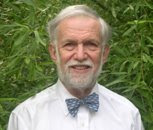
Rhododendrum Bushes
Discovered and Cultivated by Bertram
His career was advanced via a London Wool Merchant and botanist by the name of Peter Collinson; the latter paid him to collect specimens of new plants to ship to him in England for distribution. This was a time when many wealthy British landowners were doing extensive landscaping and were in search of exotic hearty species of plants not native to England. North American species were thus particularly attractive.
Every fall, Bertram sent Collinson Bertram's Boxes which generally contained 100 or so varieties of seeds and dried plants specimens. Collinson acted as his agent for distribution to a list of clients that included the Duke of Argyll and John Busch a co-founder of the Loddiges Nursery in London that specialized in exotic flora. Perhaps his most noted client was James Petre, 8th Lord Petre of Thorndon, Essex; he was creator of the Great Stove, supposedly the largest hothouse in the world (thirty feet high and 60 feet long) and the foremost collector of North American trees and shrubs in Europe.
Despite the ongoing French-Indian war, Bartram made many excursions into the wilderness collecting specimens with the financial aid of European naturalists. In 1738, he traveled 1100 miles across the Blue Ridge Mountains and then explored the Catskill Mountains in 1755. In his Diary of a Journey Through the Carolinas, Georgia and the Florida (July 1765-April 1766), he wrote of many specimens he collected.
Most of Bartram's plant discoveries were name by botanists in Europe. He is best known for discovering and introducing a wide range of North American flowering trees and shrubs including Kalmia, Rhododendrum and Magnolia species.
Through the lobbying efforts of Benjamin Franklin and Collinson, he was awarded a pension of 50 pounds per year as King George III's Botanist for North America.
Located on the Schuylkil River in Philadelphia, Bartram's Garden is the site of his house and botanical gardens (circa 1728) and is open to the public. It is the oldest surviving botanic garden in North America.



